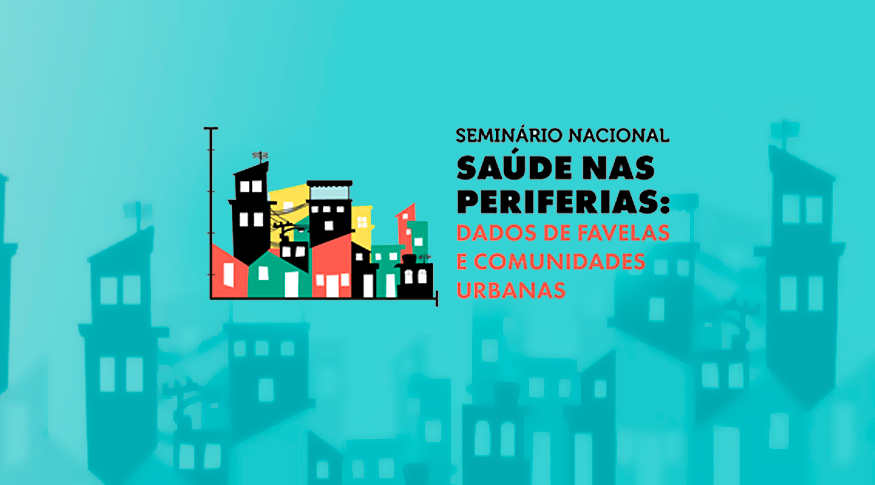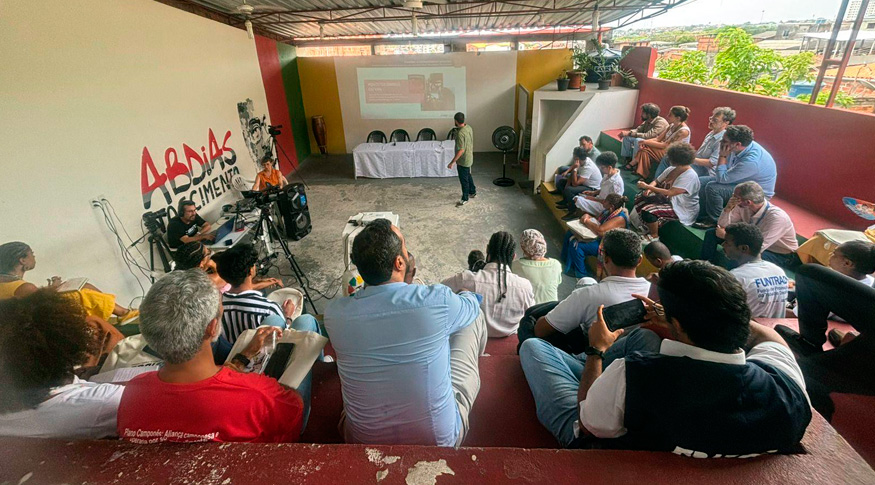Summary of Social Indicators
Poverty drops to 31.6% of the population in 2022, after reaching 36.7% in 2021
December 06, 2023 10h00 AM | Last Updated: December 11, 2023 11h49 PM
Highlights
- The percentage of persons living in poverty fell from 36.7% in 2021 to 31.6% in 2022, whereas the proportion of persons in extreme poverty fell from 9.0% to 5.9%, in the same period.
- In 2022, there were 67.8 million persons in poverty and 12.7 million in extreme poverty. Against 2021, these figures dropped by 10.2 million and 6.5 million persons, respectively.
- From 2021 to 2022, extreme poverty and poverty decreased in all the Major Regions, mainly in the North (-5.9 p.p. and -7.2 p.p., respectively) and in the Northeast (-5.8 p.p. and -6.2 p.p.).
- In 2022, among persons up to 14 years of age, 49.1% were poor and 10.0%, extremely poor.
- In the population aged 60 and over, 14.8% were poor and 2.3%, extremely poor.
- Among black or brown persons, 40.0% were poor in 2022, twice as much the rate of the white population (21%).
- The family arrangement formed by black or brown women, without a partner and with children under 14 years of age concentrated the highest incidence of poverty: 72.2% of the residents of these arrangements were extremely poor.
- The participation of benefits from social programs in the household income of persons living in extreme poverty reached 67.0% in 2022. Earnings from work accounted for only 27.4% of the income of this group.
- Among the housing units considered poor ones, benefits from social programs reprsented 20.5% of the income, and earnings from work, 63.1%.
- The impact of the hypothetical absence of social programs has led to the rise by 12% of the proportion of poor people in Brazil in 2022, with a change from 31.6% to 35.4%. Extreme poverty had increased by 80% by 2022, having changed from 5.9% to 10.6% of the country’s population.
- In case there were no social programs in the country, the Gini index, which measures inequality in income distribution, would have been 5.5% higher, 0.548 instead of the 0.518 registered nowadays.

The percentage of persons living in extreme poverty, that is, those who mad less than R$ 200.00 per month, in Brazil, fell to 5.9% in 2022, after reaching 9.0% in 2021. The proportion of persons living in poverty, with up to R$ 637.00 per month, decreased from 36.7% in 2021 to 31.6% in 2022. As for number of persons, in 2022, there were 12.7 million persons in extreme poverty and 67.8 million in poverty, with a drop by about 6.5 and 10.2 million persons, respectively, in these conditions, from one year to another. These data come from the Summary of Social Indicators, released today (06) by the IBGE. More news about this study can be found, here, here and here.
The Institute considered, in this analysis, the parameters of the World Bank: US$2.15/day for extreme poverty and US$ 6.85/day for poverty, in terms of Purchasing Power Parity (PPP) at international prices of 2017. These are the lines used for monitoring of Sustainable Development Goals 1 (ODS1: Poverty Eradication), and were updated by the World Bank in 2022, having, so far, adopted figures of US$1.90 PPC 2011/day for extreme poverty and US$ 5.50 PPC 2011/day for poverty.
According to previous parameters, the percentage of persons in extreme poverty (5.2%) and poverty (24.1%) would be lower, but the movement observed in the time series is the same, with an increase from 2020 to 2021 and a decrease from 2021 and 2022. In addition to that, it is observed that the update had a bigger impact on the percentage of persons in poverty than on those in extreme poverty.
“In the extreme poverty line there is no significant difference between figure in the previous and in the updated line in the series, because it is basically for subsistence, and its update is a price-related issue. The poverty line presents a bigger difference, related to the dynamics of earnings and more heterogeneous consumption patterns in medium-high income countries,” says André Simões, analyst of the survey.

Between 2021 and 2022, poverty and extreme poverty decreased in all the Major Regions, the main highlights being the North (-7.2 p.p. and -5.9 p.p., respectively) and the Northeast (-6.2 p.p. and -5.8 p.p.). “These major Regions concentrate the biggest volume of persons in these situations and are also those having a bigger impact of social programs for income transfers,” contextualizes Simões. Another highlight, the Central West, recorded the biggest drop in poverty (-7.3 p.p.), related, mainly, to dynamism of the labor market in 2022.
The Northeast Region concentrated 43.5% of the population in poverty and 54.6% of the population in extreme poverty. In the North, which gathered 8.7% of the total population, held 12.8% of the persons living in poverty and 11.9% of those living in extreme poverty. More than half (51%) of the population in the Northeast were in poverty. The Southeast, with 42.1% of the country’s population, concentrated 30.7% of the persons in poverty and 23.8% of those in extreme poverty.
Two in five black or brown women live in poverty
Black or brown persons represented more than 70.0% of the poor and extremely poor. These inequalities also remained in the rates of poverty and extreme poverty: in 2022, 40.0% of the black or brown persons were poor, at a level twice above that of the white population (21%) and 7.7% of them were extremely poor, more than twice the rate of white persons (3.5%).
Among black or brown persons, the percentages were even higher, and reached 41.3% of poor and 8.1% of extremely poor persons. The household arrangement formed by black or brown women, without a partner and with children under 14 years of age also concentrated the higher incidence of poverty: 72.2% of the residents were poor and 22.6%, extremely poor.
Poverty is higher in housing units with children. Among persons up to 14 years of age, 49.1% were poor and 10.0% were extremely poor, a percentage way above that of the population aged 60 and over: 14.8% of poor persons and 2.3% of extremely poor ones.
Earnings impacts poverty and social programs, a situation of extreme poverty
The share of benefits from social programs in the household income of persons living in extreme poverty reached 67.0% in 2022. On the other hand, earnings accounted for only 27.4% of this group's income. In the Northeast, benefits from social programs represented 72.4%, falling to 48.2% in the Southern region, while the share of earnings was 23.7% and 38.6%, respectively.
Among households considered poor, the income from social programs benefits accounted for 20.5% of total income. Earnings, on the other hand, accounted for 63.1%. In the Southeast, the proportion is even higher, with earnings reaching 70.2% of household income, while in the Northeast, the percentage was 54.3% in 2022.
“This highlights the importance of income transfers in the composition of household income of persons living in extreme poverty and the greater influence of the labor market on the income composition of the poor population," notes Mr. Simões. In the total population, income distribution by source was 74.5% from work; 18.1% from retirement and pensions; 3.0% from social program benefits and 4.4% from other sources of revenue.
Social programs reduce extreme poverty by about 80%
In addition to a greater share of the income composition of the extremely poor population, benefits from government social programs also have an impact on reducing extreme poverty. The study analyzed the hypothesis of non-existence these programs, and the data showed that extreme poverty would have been around 80% higher, increasing the current percentage from 5.9% to 10.6%.
Due to poverty, the impact of the absence of benefits from government social program would have been smaller, with a percentage of poor people 12.0% higher than that actually recorded in 2022, increasing from 31.6% to 35.4%.

The Gini index of per capita household income, an indicator that measures inequality in income distribution, would have been 5.5% higher in the absence of the social program benefits, increasing from the current 0.518 to 0.548. In the Northeast and North, social programs impacted the reduction of the Gini index by 11.6% (0.517 with benefits to 0.585 without benefits) and 8.9% (0.509 with benefits and 0.559 without benefits), respectively, proving to be an important element in reducing economic inequality in these regions.
More about the survey
The Summary of Social Indicators: an analysis of the living conditions of the Brazilian population in 2023 aims to systematize and present a set of information related to the social reality of the country, based on structural topics of great relevance for the construction of a comprehensive framework on the living conditions of the Brazilian population.
This edition features indicators on economic structure and labor market, standard of living and income distribution; housing conditions and education. The analyses by population groups draw attention to earnings inequality, gender, color or race, age groups, urban or rural housing units and household arrangements, showing the evolution of indicators in the time series. The information presented refers to Major Regions, Federation Units and, for some indicators, capital municipalities.




















